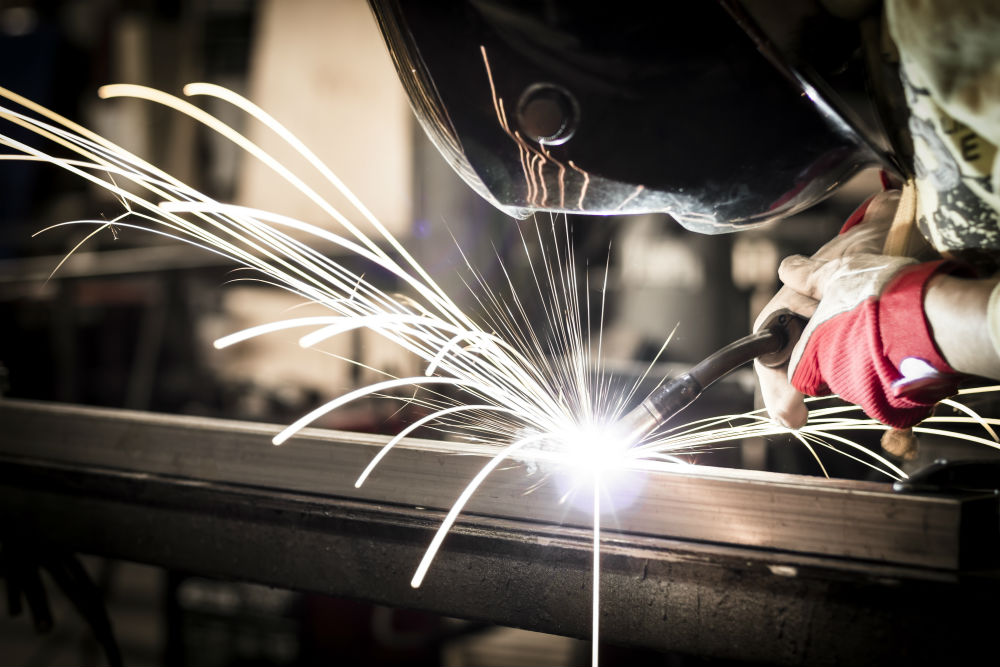
Tips to avoid welding hazards and injury
February 28, 2020
By
Nina Sharpe
Precautions, proper PPE can prevent a variety of issues

Welders are at risk of many injuries if they do not follow the necessary precautions. (guteksk7/Adobe Stock)
Whether welding professionally or recreationally, safety is always a major consideration.
There have been numerous advances in technology that make welding a much safer option than 20 years ago. However, there are still several safety hazards to look out for to ensure you don’t hurt yourself.
Welders are at risk of many injuries if they do not follow the necessary precautions. The list includes:
- flash burns to the eye
- excessive noise leading to hearing loss
- inhalation of toxic fumes
- inhalation of chemicals
- skin burns.
Common injuries
The welding arc is extremely hot, and the process emits UV rays and bright flashes that cause burns known as “flash burns.” These burn your skin instantaneously and cause significant damage to your eyes as well. It’s very easy to get burned during welding, so taking the necessary precautions is paramount.
Welding fumes are often underestimated as a hazard and can cause serious health issues if inhaled.
Short-term exposure can lead to nausea and dizziness, while long-term exposure can lead to different types of cancer, as well as damage to your nervous system and kidneys. Some gases like helium, carbon dioxide, and argon can pose serious suffocation risks, especially in enclosed areas without proper ventilation.
During the welding process, live electrical circuits melt metals together. This poses a risk in the form of an electric shock. Electrocution is a serious hazard when welding, and can cause injuries or even death.
Depending on the conditions, a shock of even 50 volts can be enough to injure or kill you.
Welding also creates sparks that fly around and can cause fire hazards. If you have any grease on your clothing, you are at the highest risk of being burned.
Flammable chemicals should always be kept separate from welding spaces.
Proper PPE
There are many ways to prevent and minimize welding safety hazards. These include wearing proper clothing and following safety guidelines.
Eye injuries are the most common type of injury among welders, so make sure you are always wearing the correct helmet, visor, and lens. Helmets protect against UV radiation, debris, and burns. Adjusting the lens filter is essential to protect your eyes and to see clearly.
Insulated fire-resistant gloves and boots protect you from hazards like an electric shock and falling objects. Always ensure your gloves are dry and in good condition.
You can’t wear your everyday clothes when welding, as they can catch on fire very quickly and leave you with burns. Experts recommend that you invest in a high-quality leather apron to wear over your clothes. And again, remember the gloves and boots!
Take precautions
Preparing the metal before welding and using adequate ventilation techniques should be on every welder’s checklist.
It is necessary to strip the metal beforehand, as the fumes released by burning metal are incredibly toxic. If it is not possible to do so, experts advise welders to use masks and a fume extractor, which helps suck the fumes away.
Since the fumes associated with welding are extremely harmful, ensuring your work area is well ventilated is a critical step. If you are working outside, stay upwind of fumes.
For indoor welding, you should make use of local exhaust ventilation systems.
Ensure you keep the exhaust ports away from fellow workers. Never weld in a confined space, and always wear proper protection.
Before starting any welding work, look around to ensure the workplace complies with all safety regulations. Ensure that there are:
- no flammable substances in the vicinity
- the floor is not wooden
- the floor is not wet
- the workplace is clean and organized
- the workplace is not cramped.
Even if you think you’re the top dog of welding, reading the manual on new equipment is mandatory. It’s a good idea to be fully informed before making a mistake because you were using unfamiliar equipment.
Prepare for every conceivable emergency beforehand. Basic disaster management should be included in the training, and welders should be taught about the correct procedures in different scenarios such as fire, electrocution or explosion.
At the very least, fire extinguishers should be installed in the workplace where they are easily accessible by workers.
Nina Sharpe is a content writer for ProWelding.org.